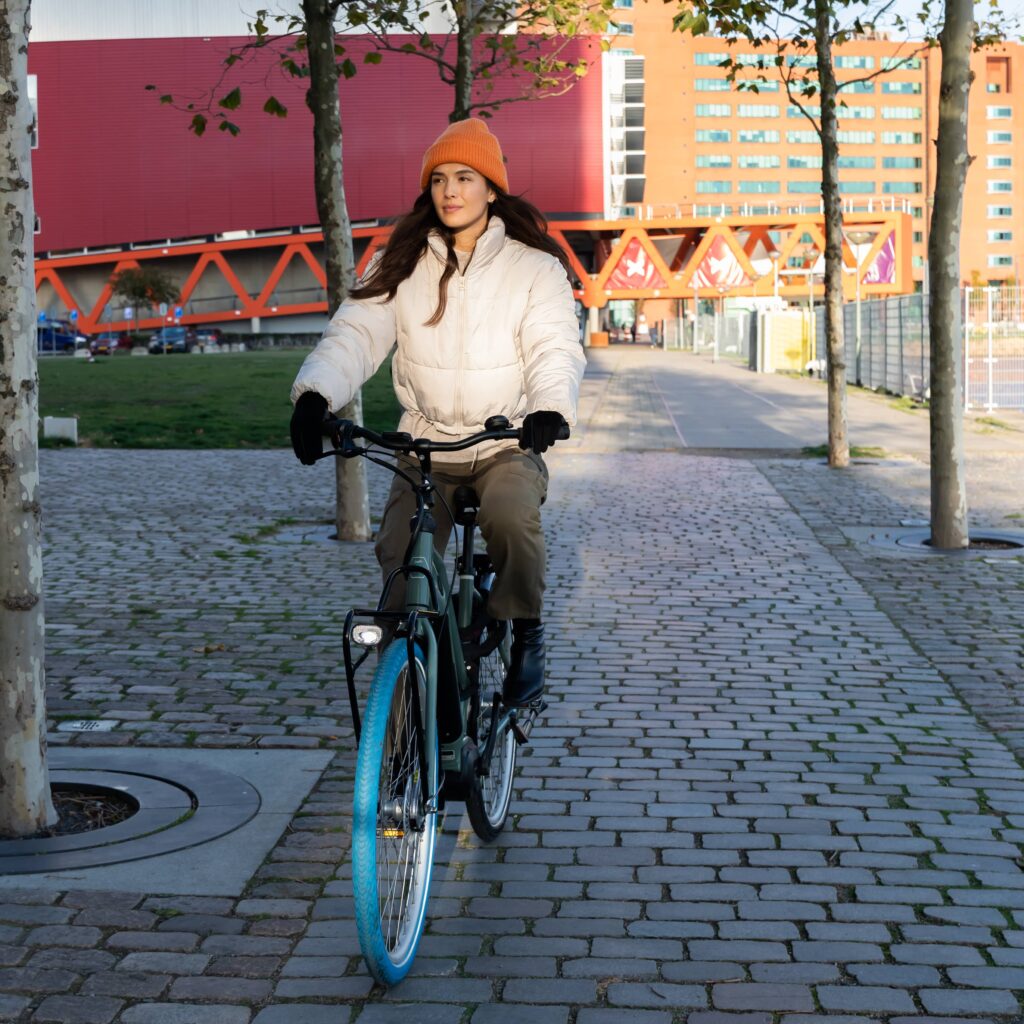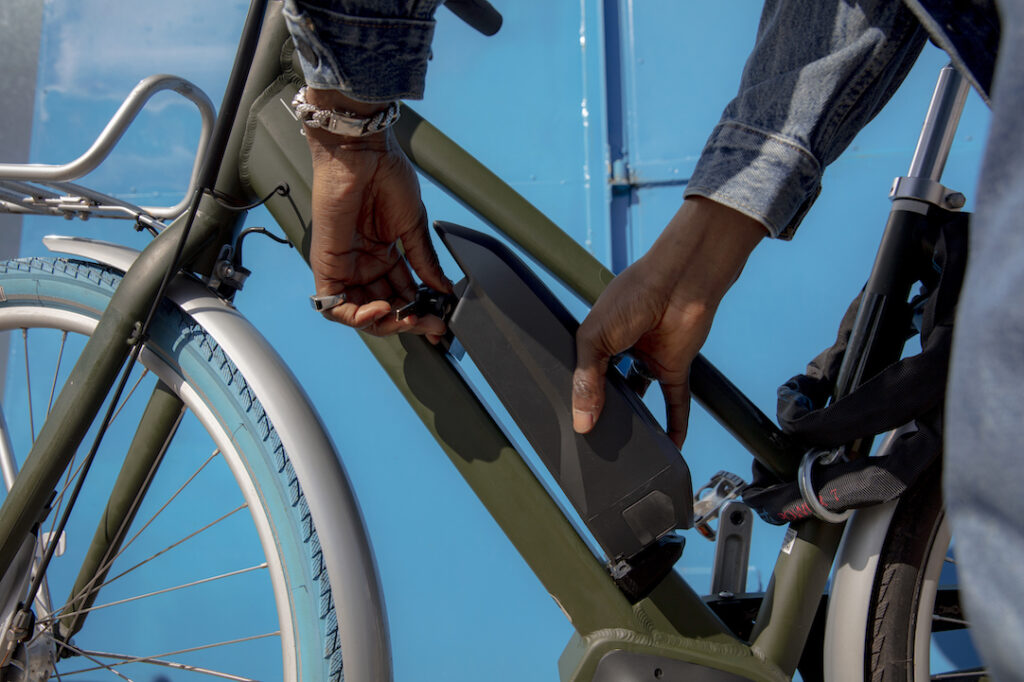Old parts, new beginnings

Through data-driven design, continuous repair, and the use of high-quality spare parts, our bikes live many lives before they can no longer be used as bikes. But when the day eventually comes that a frame is no longer safe to ride or a part is irreparably broken, the story isn’t over. In fact, it’s just the beginning of another story.
When a frame reaches the end of its life as a frame, our warehouse mechanics carefully harvest as many of its still-functional parts as possible. These parts will then be quality checked to make sure they are good to go before being used to repair another bike that comes through the warehouse. The parts that can no longer be used are separated as much as possible, and then placed into their respective recycling streams. From there, specialized recycling partners make sure that the parts that we can no longer use are turned into a material that other companies can use. For example, our tire recycling partner in the Netherlands takes the rubber from our damaged tires and turns it into rubber mats used in play parks and stables.
Through stringent recycling standards, we make sure that parts we can’t use anymore are turned into materials that other organizations can use. In this way, the tires of your bike start a new life as, for example, the ground your nephew walks on at the playground.
So, are all parts recycled?
The short answer is no. We are well on our way to diverting all waste from landfill into recycling streams but we are not quite there yet. The reason for this is mainly complex, multi-material parts like the saddle. Most saddles contain Polyurethane foam, metals, plastics, and a glue to hold all this together. Whilst parts like the plastics and metals in the saddle can be relatively easily recycled, they can only be recycled in traditional recycling streams if they can be separated. On parts like the saddle, this is really hard (i.e., requires a lot of labor to do well) so they often end up in landfill waste so as not to contaminate other waste streams. There are also some materials (like Polyurethane foam) that cannot be recycled yet. But we’re not just going to give up there. We are starting to work with a new recycling partner in the Netherlands who, through a rigorous shredding and separation process, are able to more effectively process materials that are difficult to separate. Our product designers are conscious of designing bikes with their end of life in mind and are also constantly working to design using recycled, mono-material, and separable parts to help further minimize the number of parts that we can’t recycle.
Another issue we face in terms of recycling is bike theft. When Swapfiets bikes are stolen, we can no longer control their end of life. This means that we can’t ensure that parts end up in the correct waste stream, which means we aren’t able to retain the value of these parts. Our Bike Hunting teams are working hard to find stolen bikes and bring them back into our system so that we can keep our bikes on the streets and our city streets clean.
What about electronic waste?

Our e-Bikes have a few electric parts on them – the battery, the engine, the display to name a few – which require an entirely separate waste stream. However, before we get to this we of course try to extend their lives (and their components’ lives) as much as possible. We’ve partnered a battery repair company who helps us keep our e-Bike batteries in top condition. Whenever one of our batteries isn’t working exactly as it should be, we send it to our partner who is usually able to fix it. When they aren’t, and the battery well and truly has reached the end of its life, they salvage as many parts as possible for use on other batteries and then dispose of the battery safely. We are also working with our supplier to find a solution for engine repair and are finding ways to repair cracked displays.
We’ve already made changes with our lights, changing from battery powered lights to magnetic lights. As recently written about in one of our blogs, we are also working with students and other designers to come up with an even better solution.
If you could imagine an ideal world (part-wise), what would it look like?
In an ideal world, our bikes would never break and still be super comfortable. Though our designers are working hard to make our bikes as durable as possible, the reality is that parts do occasionally break and bikes do occasionally need to be decommissioned. With this in mind, an ideal world is one where all parts are repaired, reused, and eventually recycled directly into other parts of similar value. In other words, the recycling process is robust enough to retain the material value of the part so that a used blue tire can be turned back into a blue tire (powered by renewable energy, of course). Then, on the input side, all of the parts that we order (spare and for new bikes) will be made using recycled materials such that there is a minimal amount of virgin inflow and a minimal amount of waste outflow.
Going forward, we continue to design durable bikes and parts with their end of life in mind, paying particular attention to the materials used and the separability and complexity of the parts. We will also continue to work closely with our repair, waste, and partners to ensure that our bikes and parts live for as long as possible in whatever form – bike or window frame – they might take. In other words, we will continue to create pathways for our old parts to have new stories.